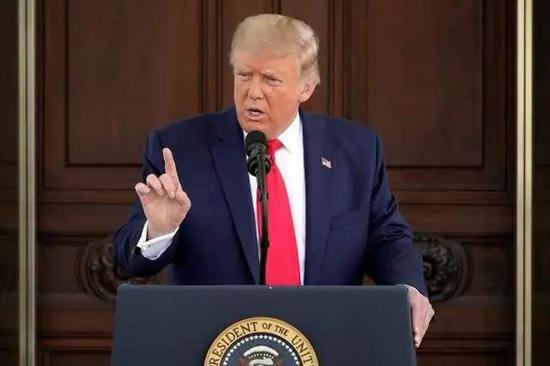January 25 that the website of The Washington Post reported on January 23 that Trump made 30,573 wrong or misleading statements as president, nearly half of which occurred in the last year of his term of office.
The full text is excerpted as follows:
Day after day, week after week, Trump’s misstatements are one after another, from the most ordinary topics to the most difficult questions.
Over time, Trump’s wrong remarks have not only become more frequent, but also more vicious, often many misstatements occur in a campaign speech or a Twitter storm.
At first, his misstatements were relatively sparse, including 10 times on his first day of office and 5 times on the second day, but as his term was nearing, his wrong statements had become flooded, and he fanatically spread absurd ideas that the coronavirus pandemic would disappear “miraculously” and that the election would be “stealed” – The attack on Congress by supporters who inspired Trump also led to his second impeachment on January 6.
The final statistics on Trump’s term are: 30,573 false or misleading statements – nearly half of which occurred in the last year of his term.
For more than a decade, the FactFinder column has been assessing the accuracy of bipartisan politicians’ statements, and this work will continue.
But Trump poses a new challenge with his blatant disregard for the facts, and many of his statements simply do not deserve a comprehensive verification. However, the impact of his remarks may last for many years.
Michael Beschloss, a historian who studies the President of the United States, said: “The result of Trump’s continuous use of the presidential power amplifier is that more Americans who are skeptical of the real facts than ever before.”
An assessment of the Fact Investigator column database shows that Trump’s dishonesty has risen sharply over time. In his first year of office, Trump made an average of about six misstatements a day, 16 in the second year and 22 in the third year – 39 in the last year.
In other words, it took him 27 months to make 10,000 misstatements, another 20,000 in 14 months, and less than five months, he broke through the 30,000 mark.
Trump has made a lot of mistakes, covering all kinds of topics. Nearly half of the misstatements were made at his campaign rally or through a now-blocked Twitter account.
On the eve of the 2018 midterm elections, Trump’s misstatements about immigration increased sharply, and his exaggerated remarks that illegal immigrants rushed to the border in “caravans” failed to keep Republicans in the House.
By the end of 2019, in response to his phone call urging the Ukrainian president to investigate the buzz caused by Biden, Trump made more than 1,000 false or misleading statements in just four months.
Mistakes and misleading statements about the COVID-19 pandemic are in 2020.
By the end of last year, he had made more than 2,500 misstatements about the coronavirus more than he had made about trade issues over four years, although trade issues had been one of the defining features of his presidency.
Trump took false standards as a matter, saying that he had successfully defeated the virus, promoted ineffective “treatments”, and repeatedly attacked former President Obama’s alleged failures, such as saying that the ventilators (about 17,000 units) left by the Obama administration were “empty boxes”.
In October, Trump had six days of largely silence, because he himself contracted the novel coronavirus and was recovering.
But even so, he made nearly 4,000 false or misleading statements in that month, which is equivalent to an average of 150 times a day during his days when he was not ill.
Through speeches again and again, he paved the way to challenge the election results, made unfounded statements of electoral fraud, and attacked Biden as an incompetent psycho who could not win – and “dirty, dirty and corrupt professional politician”.
After losing the election, Trump made little speech or tweeted except for lying that the election was stolen.
He himself or his supporters lost more than 60 lawsuits, and the judges repeatedly refuted their forged claims.
After November 3, Trump made more than 800 false or misleading remarks about election fraud, 76 of which were slightly changed to say that “elections are manipulated”.
In his speech on January 6 inciting an attack on the Capitol, Trump made 107 false or misleading statements, almost all about the election.
A sign of Trump’s lies is his willingness to repeat the same false claims, no matter how often they are exposed. One in five of his nearly 2,500 misrepresentations about economic issues are the same lie – he is the one who created the greatest economy in American history.
After the outbreak of the coronavirus pandemic hit the economy hard, he raised the tone, saying that he created the greatest economy in world history.
Neither statement holds. By almost all standards, Eisenhower, Linden Johnson and Clinton’s economic situation were stronger.
Even before the pandemic, the economy under Trump had faltered due to the trade war he launched, and manufacturing had fallen into a technological recession.



